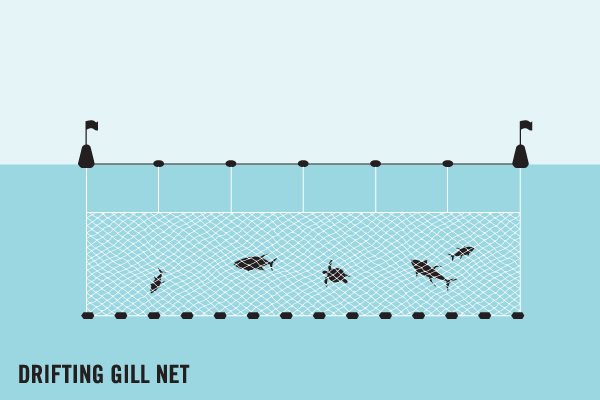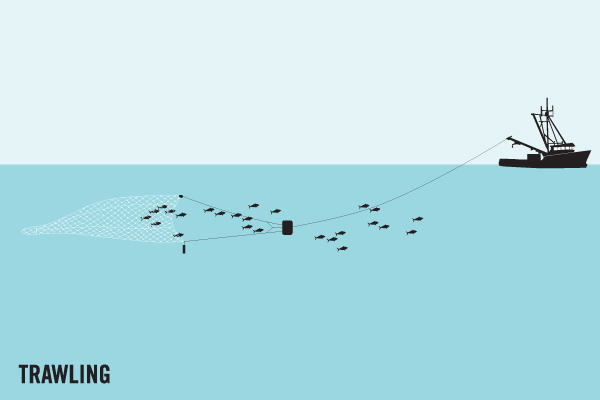Average Weight/Length
19 to 28 inches, and weight ranging from 7 to 30 pounds.
Common from 2 to 20 pounds; exceeds 40 pounds. World record 45 pounds,
Other "Popular" Names for this Fish
Bermuda Tuna, Football
Location Habitat
Occurs in tropical and warm temperate waters of the western Atlantic Ocean. There are scattered records of blackfin tuna occurring as far north as Martha's Vineyard, Massachusetts, but the usual range is from North Carolina to Rio de Janeiro, Brazil, including the Caribbean Sea and the Gulf of Mexico. Found in oceanic waters, sometimes not far from the coast (Ref. 13628). Forms large mixed schools with the skipjack tuna. Its spawning grounds are located well offshore. Preys on surface and deep-sea fishes, squids, amphipods, shrimps, crabs and stomatopods and decapod larvae. The largest fishery for blackfin tuna operates off the southeastern coast of Cuba and uses live-bait and pole.
Biology & Physical Description
Dark overall but with a bronze stripe down the side that can cause confusion with the more golden stripe of the Yellowfin Tuna. The finlets, however, are dark. Blackfin is the smallest tuna species in the Thunnus genus, generally growing to a maximum of 100 centimetres (39 in) in length and weighing 21 kg (46 lbs). Blackfin have oval shaped bodies, black backs with a slight yellow on the finlets, and have yellow on the sides of their body. Blackfin are only found in the western Atlantic from Cape Cod and as far south Brazil. This is a pelagic, schooling fish that generally feeds near the surface. Its diet consists of small fishes, squid, crustaceans, and plankton. An excellent light tackle species, it can be taken by trolling or casting small baits or lures, including ballyhoo, mullet and other small fishes as well as strip baits, spoons, feathers, jigs, or plugs; or by live bait fishing from boats at the surface of deep waters one to two miles offshore. It has some local commercial importance, but is predominantly an angler's fish. It is a spunky game species and the flesh is of good quality and flavor. Dorsal spines (total): 13; Dorsal soft rays (total): 14-15; Anal spines: 0; Anal soft rays: 13 - 14; Vertebrae: 39
Geographic Species Map (Fishbase.org Map)
|
|

|
Summary of Distribution: Western Atlantic: off Martha's Vineyard, Massachusetts south to Trinidad Island and Rio de Janeiro, Brazil; including south of Brazil. Highly migratory species, |
|
Note: Distribution range colors indicate degree of suitability of habitat which can be interpreted as probabilities of occurrence (fishbase.org) |
|
Sport Fishing Techniques
|
|
Gill netsGill-nets are the dominant gear in the Indian Ocean. Gill-nets are used in artisanal and semi-industrial fisheries, contributing to 30-40% of the total catch. The net design is comprised of continuous panels of uniform mesh size, aimed to trap fish behind the gills. The International Sustainable Seafood Foundation (ISSF) notes that rates of sharks and turtle by-catch in Indian Ocean gill-net fisheries are high.. |
|
|
|
River DriftRiver Drift means to use the.... |
|
|
|
TrawlingTrawling is when.... |
|
Tackle & Baits
Light classes of ocean tackle, plus spinning and baitcasting outfits. For trolling, choose small offshore lures, feathers, spoons, small rigged baits such as Ballyhoo and strips. Deep-diving plugs are also good. Blackfins also can be chummed with live Pilchards or similar small baitfish, and fished for with the same bait, or by casting. Best hard lures are white jigs, tied with bucktail or feathers to provide a larger profile. Flies should be similarly tied - to imitate size and color of the live chum.
Game Rating
Game Rating : 9/10
Game Description :
Pound for pound, one of the best.
Food Rating
Game Rating : 9.5/10
Game Description :
Excellent. Utilized fresh, dried or salted, canned and frozen.
Picture (Fish)
|
|
|
|
|
|
Picture Mount
|
|
|
|
|
|
|
|
Product Specs
Available Sizes: 20 in. - 67 in.
Details: Fired-Enamel Glass Eye
Product Options: Wood Plaque, Custom Base, 360°




















 Tuna - Blackfin
Tuna - Blackfin 













